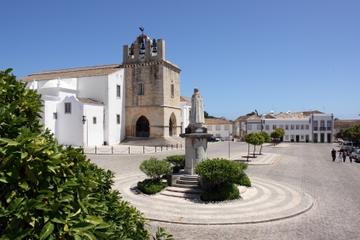
Faro is home to about 55,000 people, but despite its relatively small size, it is the administrative center of the Algarve region. Prior to its modern incarnation, Faro was occupied by the Romans and then later the Moors, serving as a trading hub for both; ruins of both invading civilizations can be found throughout the city. As it grew in importance over neighboring towns such as Silves, Faro eventually became the regional seat.
Like Porto, Faro has an old town. Inside a spacious open square that was once the site of the Roman Forum is a 13th century Cathedral that faces the 18th century Episcopal palace. Much of the city is now composed of apartments and there are attractive shops and a particularly artistic theatre. Faro is also the home of the Ria Formosa lagoon, a nature reserve of over 17,000 hectares (42,000 acres) and a stopping place for hundreds of different birds during the spring and autumn migratory periods.
Of course, Faro is also a favorite place for seaside leisure, though it is not often very crowded. The beach is about 7 km (4 mi) from the city and is a long sandy near the International Airport. The city holds various cultural events here such as concerts and festivals.
Faro has a number of interesting museums, such as the 16th century convent now serving as the city’s archaeological museum. Of particular interest is the section devoted to the Moorish occupation. The church of Nossa Senhora do Carmo is known as the “Golden Church” because of its renowned gold-leaf woodwork. It is also famous for its somewhat grim adornments – its chapel is lined with the bones of over 1,200 monks. Other museums include the Praça de Dom Francisco Gomes, a maritime museum featuring scale models of boats and galleons, and the Faro Jewish Heritage Center.